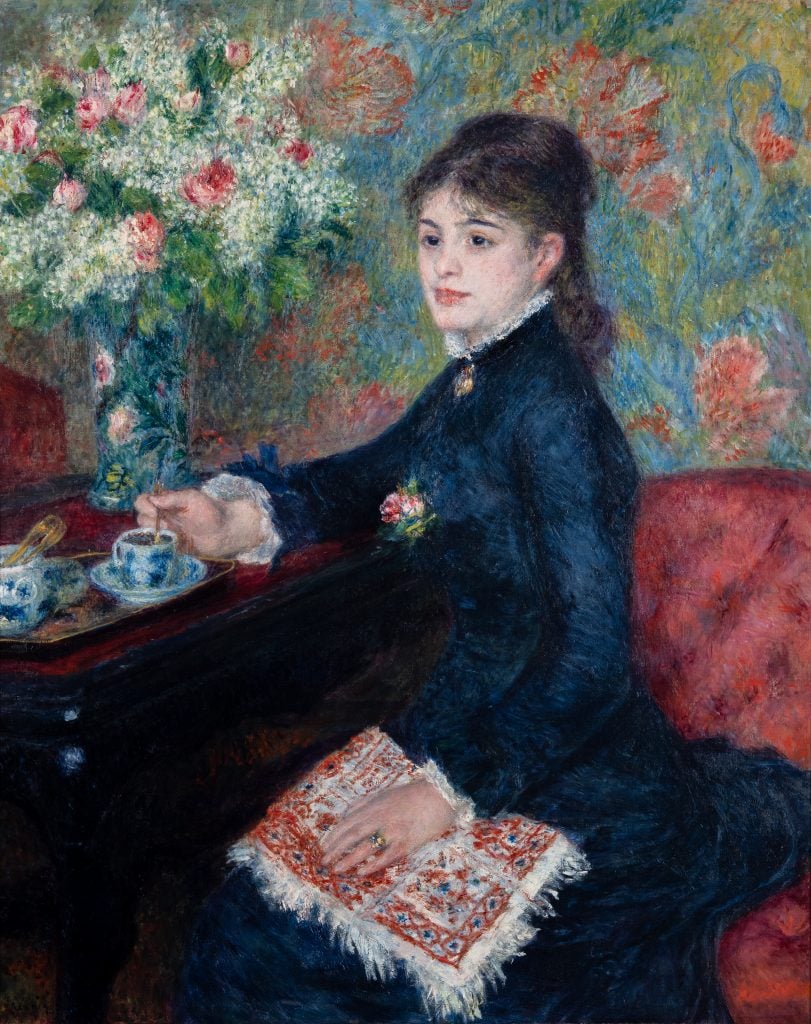Museums & Institutions
The Permanent Collection: An Intimate Renoir Portrait That Hides Cross-Cultural Crafts
Guilhem André at the Louvre Abu Dhabi discusses "The Cup of Chocolate."

Pierre-August Renoir, The Cup of Chocolate (1878)
Louvre Abu Dhabi, United Arab Emirates
Chosen by: Guilhem André, Acting Director for Scientific, Curatorial and Collections Management
This work is an oil painting on canvas executed between 1877 and 1878 by French artist Pierre-August Renoir. It features the Margot Legrand, one of his favorite models. Despite the title, we are not sure if it is chocolate that is contained in the coffee cup she is drinking from. It is a beautiful portrait of Margot, and Renoir was very much attached to her until she passed away from a sickness a year after he painted this masterpiece.
She was a seamstress, but Renoir paints her as a French bourgeois woman in a plush and luxurious Parisian setting, wearing the fashionable dress and jewelry of the time. She was like a muse to him.
Of note is the wallpaper behind her, which is likely to have been influenced by Japanese art that was popular in Europe at the time and which contrasts with the bouquet of flowers in the vase on the table. Japanese ceramics were very fashionable in the western world at the time, as well as references to Asian art in general. We find such references again in the cup Margot is drinking from, which is most likely porcelain that has been imported from China.
On Margot’s lap is a piece of embroidery that has probably been made in Algeria, due to the patterns it contains—an aspect that connects the painting to the Middle East region.
The artist kept the painting to himself for 20 years, we assume due to the relationship he had with Margot, whom he painted in other masterpiece works.
It was in a private collection in Philadelphia in the United States until the Louvre Abu Dhabi acquired it in 2022. For many years it was in the collection of the Ford family’s art collection. The work was kept privately and rarely shown in exhibitions until it was exhibited in 2015 at London’s National Gallery in “Inventing Impressionism: The Man Who Sold a Thousand Monets,” on entrepreneurial art dealer Paul Durand-Ruel.
We have managed to have this masterpiece painting from the Impressionist period within a collection that celebrates the interconnectedness and cross-cultural influence between civilizations in Asia, Europe and the Middle East, which is indeed present through this piece.
– Guilhem André, Acting Director for Scientific, Curatorial and Collections Management, as told to Rebecca Anne Proctor.
What artwork hangs across from Mona Lisa? What lies downstairs from Van Gogh’s Sunflowers? In The Permanent Collection, we journey to museums around the globe, illuminating hidden gems and sharing stories behind artworks that often lie beyond the spotlight.





